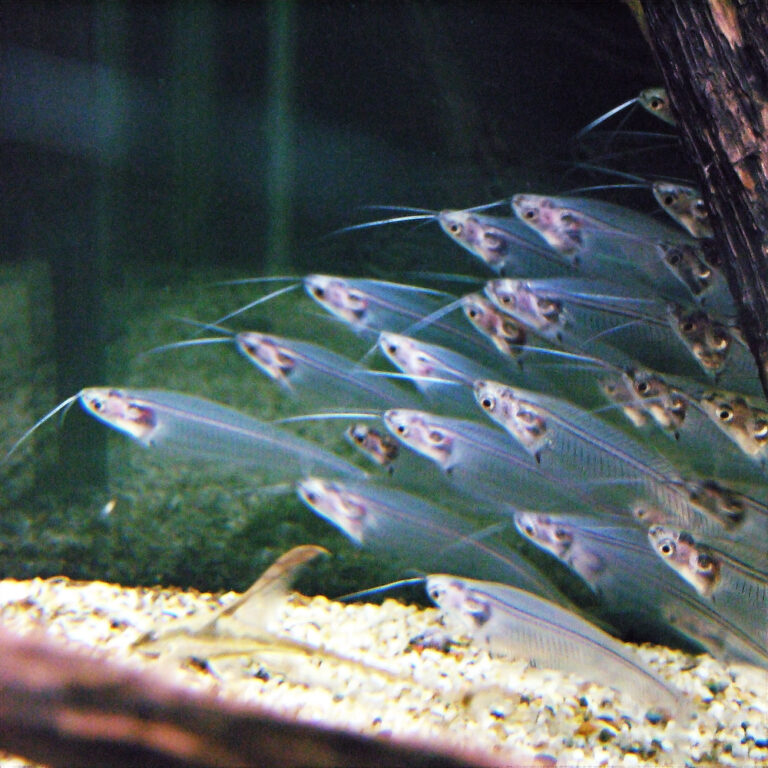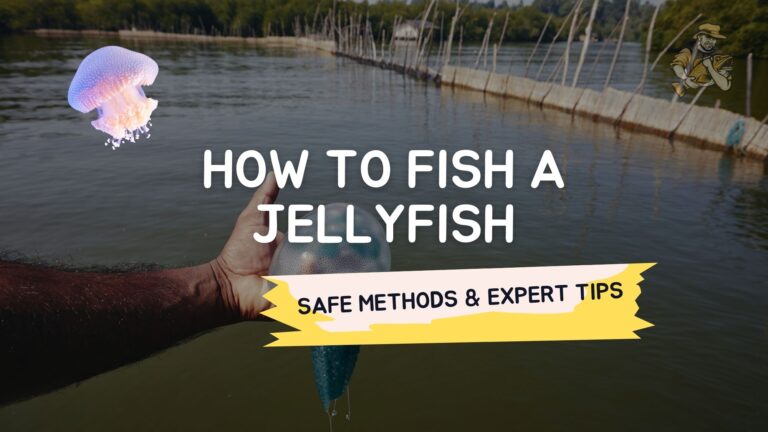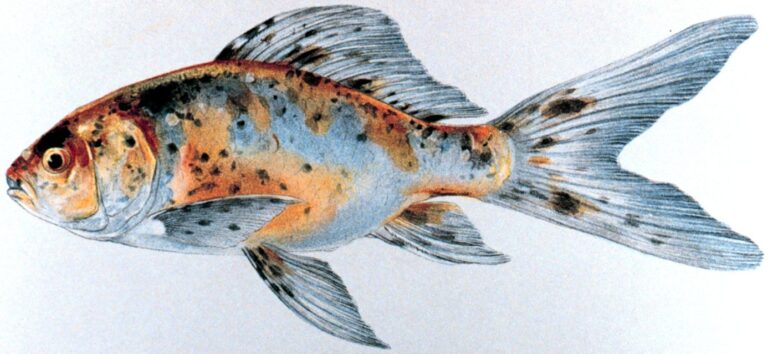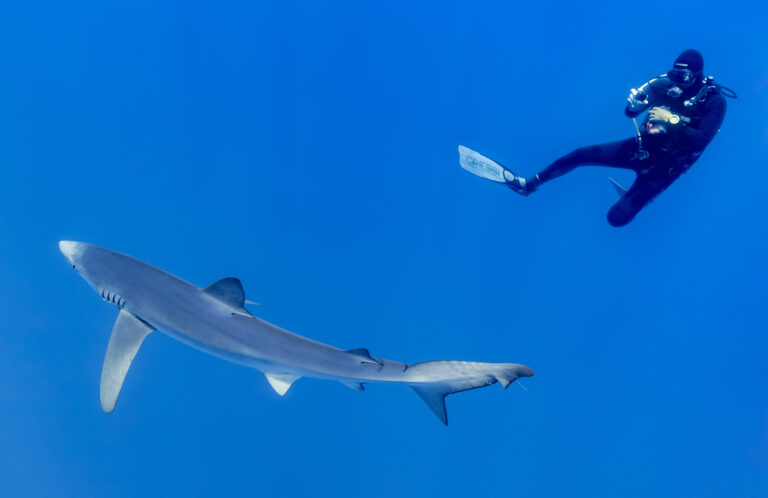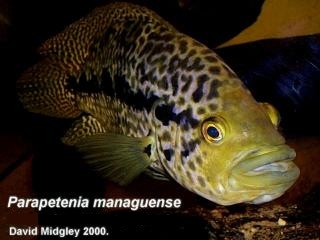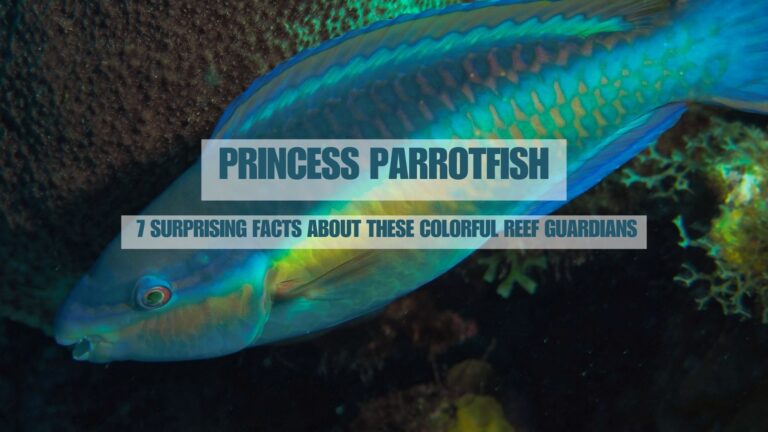Smallmouth Black Bass Fishing: Complete Guide for 2025
By Adam Hawthorne | Last Modified: June 4, 2025
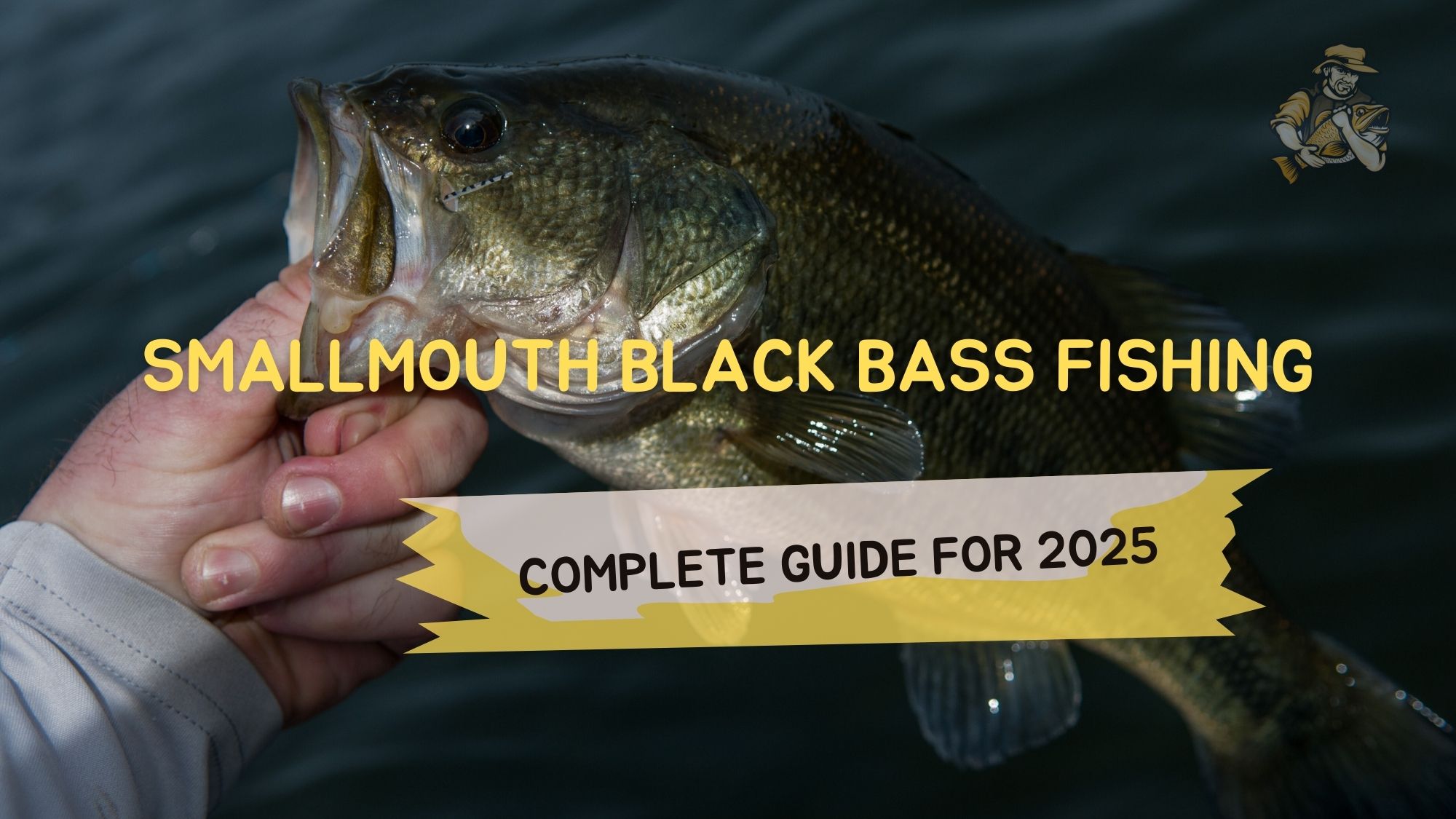
If you’ve ever felt that sudden, powerful tug on your line followed by an acrobatic jump that leaves your heart racing, chances are you’ve hooked into a smallmouth black bass. These bronze warriors have earned their reputation as one of North America’s most exciting gamefish, and for good reason. I’ve spent over three decades chasing these fighters across the Great Lakes region, and they still manage to surprise me on every outing.
Unlike their largemouth cousins, smallmouth bass bring a special kind of fight to the table – one that combines raw power with aerial displays that’ll have you telling stories for years. This guide covers everything you need to know about finding, catching, and releasing smallmouth bass in 2025, with techniques that work whether you’re fishing from shore, a small johnboat, or a fancy bass rig.
Where to Find Smallmouth Black Bass Throughout the Year
Smallmouth bass are creatures of habit, but these habits change dramatically with the seasons. Understanding their seasonal patterns has been the single biggest factor in improving my success rates over the years.
Spring Patterns (Pre-Spawn to Spawn)
When water temperatures climb into the mid-50s, smallmouth black bass begin their migration toward spawning grounds. I’ve found they typically follow underwater routes like creek channels, drop-offs, or even old roadbeds to reach shallow spawning areas.
Pre-spawn smallies often stage on the first significant structure near spawning flats – points, humps, and rocky transitions are absolute goldmines during this period. Last spring, I was fishing Lake St. Clair when I noticed almost every smallmouth I caught came from the same type of transition area – spots where the bottom changed from sand to smaller chunk rock in about 8-12 feet of water.
During the actual spawn (typically when water temps hit 60-65°F), look for circular depressions in shallow areas with hard bottoms. Smallmouth nests are easier to spot than largemouth beds because they’re usually built on cleaner, harder bottoms.
Tom at Bassresource has a detailed breakdown of smallmouth spawning behavior that changed my approach completely a few years back.
Summer Patterns (Post-Spawn to Late Summer)
After the spawn, adult smallmouth often move to deeper recovery spots nearby. I call these “comfort zones” – areas with good current, plenty of oxygen, and easy access to food. While some anglers think smallmouth immediately head to deep water, I’ve actually found many fish stay surprisingly shallow if the habitat meets their needs.
In clear northern lakes like those in Michigan’s Upper Peninsula, I regularly catch post-spawn smallies in 5-8 feet of water around isolated rock piles and weedlines. The key factor isn’t necessarily depth – it’s oxygen content and food availability.
Once true summer patterns establish, smallmouth black bass often set up on main-lake structures:
- Deep rock piles (15-30 feet)
- Underwater humps and points
- Steep drop-offs and bluff walls
- Current areas near river mouths
- Deep weedlines and transition areas
The common theme? All these spots concentrate baitfish. Find the food, find the bass.
I’ve noticed smallmouth develop much more predictable daily movement patterns during summer than any other season. Early morning often finds them feeding in shallower water, while midday sun pushes them deeper or tighter to cover.
One hot August day on Lake Erie, I watched my graph light up as a school of smallmouth moved from 28 feet at noon to just 12 feet by evening as they followed baitfish up the water column. Paying attention to these daily migrations can be the difference between a tough day and a great one.
Fall Feeding Frenzy
Fall brings my favorite smallmouth fishing of the year. As water temperatures cool, these bronze predators go on a feeding binge that can produce some truly spectacular days on the water.
The key to fall smallmouth is following the baitfish. When crayfish start moving deeper for winter and baitfish schools tighten up, smallmouth begin to school more aggressively. They’ll often push bait against structures like points, shoals, or channel edges.
In early fall, I’ve had my best success focusing on the same summer structures but adjusting for more aggressive feeding behavior. By late fall (water temps in the 50s), smallmouth often move shallower again, especially on northern lakes. This shallow migration seems counterintuitive, but I’ve found some of my biggest smallmouth of the year in 6-10 feet of water during November in Michigan.
Winter Locations (Southern Lakes & Rivers)
While many northern waters close for smallmouth fishing during winter spawning protection periods, southern reservoirs and rivers can provide year-round opportunities.
In winter scenarios, focus on steep breaks and channel swings where smallmouth can easily move between deep wintering holes and slightly shallower feeding shelves. The key is much slower presentations – something I learned the hard way after being skunked on several winter trips years ago.
Smallmouth tend to school tightly in winter. I’ve found that once you catch one, there are usually more nearby. Sometimes you need to downsize both your lure and your expectations in the coldest water.
Top Smallmouth Black Bass Lures and Techniques
Smallmouth bass respond to a wide variety of presentations, but certain lures consistently outperform others. Here’s what I’ve found works best across different scenarios:
Finesse Presentations
When smallmouth get tight-lipped (which happens more often than I’d like), finesse tactics shine. My confidence setup is a 3″ Ned rig on a 1/8 oz jighead with 8lb fluorocarbon. The subtle action drives pressured smallmouth crazy.
Drop shot rigs deserve special mention here. I was late to adopt this technique, stubbornly sticking to tube jigs while watching others outfish me. Once I finally gave in, my catch rates doubled overnight, especially for suspended smallmouth over deeper structures.
Key finesse presentations:
- Ned rigs (deadly on rocky bottoms)
- Drop shot with 3-4″ finesse worms
- Small marabou jigs (1/16-1/8 oz)
- Wacky-rigged stickbaits
- Natural-colored tubes
When fishing clear water lakes like those in Northern Michigan, I typically downsize my line to 6-8lb fluorocarbon and make longer casts. Being stealthy is non-negotiable in clear water scenarios.
Power Fishing for Aggressive Smallmouth
When conditions are right, nothing beats the excitement of power fishing for active smallmouth. These techniques cover water quickly and trigger reaction strikes.
My favorite power approach is swimming a 3/8 oz jig with a craw trailer along rocky shorelines, especially in spring and fall. The stop-and-go retrieve drives smallmouth absolutely wild.
Crankbaits rank a close second. Square bills for shallow rock and riprap, and deeper divers for ledges and drop-offs. On Lake Erie last September, a group of four of us boated over 60 smallmouth in an afternoon throwing deep-diving crankbaits along a wind-blown point. The pattern was so specific – we had to hit the rocks in 12-15 feet, no deeper and no shallower.
Key power presentations:
- Spinnerbaits (especially in stained water)
- Swim jigs with craw or paddle-tail trailers
- Square bill and deep-diving crankbaits
- Topwater walking baits and poppers
- Lipless crankbaits for flats and transitional areas
The Smallmouth Triple Threat: Tubes, Swimbaits, and Jerkbaits
If I had to choose just three lures for smallmouth fishing, it would be a green pumpkin tube, a 4″ paddle tail swimbait, and a suspending jerkbait. These three presentations catch smallmouth year-round with minor adjustments.
Tubes have been smallmouth candy for decades, and for good reason. They perfectly mimic both crayfish and baitfish depending on how you work them. I rig them on 1/8 to 1/4 oz insert jigheads and either drag them along the bottom or swim them through the water column.
Swimbaits are my search bait of choice. A 4″ paddle tail on a 1/4 oz jighead lets me cover water efficiently while still triggering bites from neutral fish. The folks at Wired2Fish have a great article on swimbait retrieves that helped me dial in this technique.
Jerkbaits might be the most overlooked smallmouth producers, especially in spring and fall. The erratic, wounded baitfish action is something smallmouth simply can’t resist. I’ve learned to vary my cadence throughout the retrieve – sometimes aggressive jerks with short pauses, other times subtle twitches with longer pauses.
Seasonal Specialties That Produce Giant Smallmouth
Beyond the standard presentations, certain techniques shine during specific seasonal windows:
Spring pre-spawn: Suspending jerkbaits and blade baits around transition areas
Spawn: Small tubes, Ned rigs, or drop shots worked slowly around visible beds
Summer: Deep drop shot rigs, football jigs, and deep-diving crankbaits
Fall: Spinnerbaits, jerkbaits, and larger swimbaits to match the forage
Winter: Blade baits, hair jigs, and small finesse presentations worked excruciatingly slow
I’ve caught my personal best smallmouth (a 6.2-pound beast from the Au Sable River) on the most unexpected lure – a tiny hair jig in mid-November when the water temperature was barely above 40 degrees. Sometimes going against conventional wisdom pays off.
Understanding Smallmouth Black Bass Habitat and Biology
To consistently catch smallmouth bass, you need to understand what makes them tick. Their habitat preferences and biological needs drive their behavior year-round.
Preferred Habitat Elements
Unlike largemouth that love thick cover and vegetation, smallmouth black bass typically prefer:
- Rocky substrate (especially chunk rock and boulder fields)
- Gravel and sandy bottoms near deeper water
- Clear to moderately stained water
- Moderate current areas
- Scattered cover rather than thick vegetation
- Drops and ledges adjacent to feeding flats
After fishing for them across dozens of lakes and rivers throughout the Midwest, I’ve noticed that smallmouth will almost always choose rocky habitat over other options when available. There’s something about those cracks and crevices between rocks that smallmouth just can’t resist.
Forage Base and Feeding Behavior
Smallmouth bass are opportunistic predators, but they do have preferred food sources:
Crayfish are perhaps their favorite menu item. During summer and early fall, a well-presented crayfish imitation is almost impossible for a smallmouth to resist. I’ve caught smallies with so many crayfish in their gullets that I’m amazed they still struck my lure.
Smaller baitfish like shiners, shad, and various minnows form another key part of their diet. In the Great Lakes, smallmouth often key on perch, gobies, and smelt.
Insects shouldn’t be overlooked, especially in rivers. I’ve seen smallmouth actively feeding on hellgrammites and larger nymphs, particularly in clearer streams.
Understanding the dominant forage in your body of water is critical. On Lake Michigan, where round gobies have become prevalent, dark brown and green goby imitations have become my go-to colors. On inland lakes with clear water and abundant perch populations, perch-pattern swimbaits produce consistently.
Spawning Behavior and Protection
Smallmouth typically spawn when water temperatures reach 60-65°F, usually a few weeks after largemouth in the same body of water. Males create nests in areas with hard bottom composition – typically gravel, sand, or small rock.
Male smallmouth guard these nests fiercely, which makes them vulnerable to fishing pressure. Many states have implemented closed seasons or catch-and-release regulations during this period. Michigan, for instance, closes the season on most waters until mid-June to protect spawning smallmouth.
Even where legal, I personally practice strict catch-and-immediate-release for bedding smallmouth. A displaced guardian male leaves eggs vulnerable to predation from gobies, perch, and other egg-eaters. If you do target bedding fish, minimize their time out of the water and release them near the bed.
Temperature Preferences and Seasonal Movement
Smallmouth activity levels closely follow water temperature:
- 40-50°F: Slow, methodical feeding with minimal movement
- 50-60°F: Increased activity and beginning of spawn preparations
- 60-70°F: Peak activity including spawning and post-spawn feeding
- 70-75°F: Optimal feeding temperature for summer patterns
- 75-80°F: Still active but may move deeper in search of comfort
- 80+°F: Often seek cooler water, oxygen becomes a limiting factor
- 50-60°F (fall): Heavy feeding activity in preparation for winter
I’ve noticed smallmouth become particularly temperature-sensitive when waters warm above 75°F. During a heatwave last July, I completely struck out fishing my usual summer spots on Lake St. Clair. It wasn’t until I found a stretch with slightly cooler water from a small creek inflow that I located active fish again.
Gear Recommendations for Smallmouth Black Bass
The right gear makes a huge difference when targeting these hard-fighting fish. Here’s what I’ve found works best after decades of refinement:
Rod and Reel Setups
For general smallmouth fishing, a 7′ medium action spinning rod paired with a 2500-3000 size reel is the perfect all-around combination. I’ve landed countless smallies on this setup, from 2-pounders to fish approaching 6 pounds.
For finesse techniques (drop shot, Ned rig, light tubes):
- 6’10” to 7’2″ medium-light spinning rod with fast action
- 2500 size reel with smooth drag
- 8-10lb braided line with 6-8lb fluorocarbon leader
For power techniques (crankbaits, spinnerbaits, topwater):
- 7′ to 7’3″ medium to medium-heavy rod
- 2500-3000 size spinning reel or baitcasting setup
- 10-12lb fluorocarbon for subsurface lures
- 15-20lb braid for topwater
River smallmouth often require slightly heavier gear due to current and rocky environments. I learned this lesson the hard way when I lost three consecutive fish (and lures) to underwater boulders while using my typical light setup on the Au Sable.
Line Selection Strategies
Line choice drastically affects smallmouth catch rates, especially in clear water. Here’s my approach:
Fluorocarbon is my go-to main line for most smallmouth fishing. The low visibility and improved sensitivity make it perfect for feeling light bites. I typically use 8-10lb test for most applications, dropping to 6lb in ultra-clear conditions or rising to 12lb around heavy cover.
Braided main line with fluorocarbon leader works exceptionally well for drop shot and other finesse techniques. The no-stretch braid transmits subtle bites while the fluoro leader remains invisible to wary smallmouth. My standard setup is 10-15lb braid to a 6-8lb fluoro leader.
Monofilament still has its place, particularly for topwater lures where you want some stretch and buoyancy. I’ll use 10-12lb mono for poppers and walking baits, especially in situations where I’m making long casts.
The most expensive rod and reel won’t help if you’re using the wrong line for the conditions. I once watched an excellent angler struggle all day on a clear Canadian lake because he refused to downsize from his heavy fluorocarbon. Don’t make that mistake.
Budget-Friendly Options That Still Perform
Not everyone needs to spend top dollar on gear. Here are some affordable options that won’t let you down:
Rods: Berkley Lightning Rod and Fenwick Eagle are both excellent values around the $60-80 range. I keep a Lightning Rod in my truck as a backup and find myself using it regularly.
Reels: Pflueger President and Shimano Sienna provide smooth performance at budget-friendly prices. My son Tommy has been using a President for three seasons without a single issue.
Line: Seaguar Invizx fluorocarbon offers performance close to premium lines at a more reasonable price point. For braid, I’ve found Sufix 832 offers a good balance of quality and value.
Lures: Many of my most productive smallmouth lures are reasonably priced. Zoom Super Flukes, Strike King Rage Tail Craws, and Basic Z-Man Ned rig baits all cost under $5 per pack and catch fish consistently.
I started out with very basic gear 30 years ago and still caught plenty of smallmouth. Focus on fundamentals rather than fancy equipment, especially when you’re beginning.
Regional Smallmouth Black Bass Fishing Hotspots
While smallmouth bass inhabit waters across much of North America, certain regions stand out for trophy potential and numbers.
Great Lakes Region
The Great Lakes system offers world-class smallmouth fishing opportunities:
Lake Erie has rightfully earned its reputation as the greatest smallmouth fishery on the planet. The western and eastern basins consistently produce both numbers and trophy potential. During a trip last fall near Buffalo, NY, we boated over 30 smallmouth in a day with an average weight over 4 pounds.
Lake St. Clair technically isn’t one of the Great Lakes, but this smallmouth factory between Lakes Huron and Erie produces incredible numbers. Its relatively shallow, fertile waters grow chunky smallmouth that feed aggressively.
Lake Michigan’s northern sections, particularly around the Door County peninsula and Michigan’s Upper Peninsula, offer spectacular smallmouth opportunities around rocky islands and points.
Georgian Bay (Lake Huron) features the classic Canadian Shield structure that smallmouth love – granite points, rocky shorelines, and countless islands.
River Systems
River smallmouth develop a special kind of power from fighting current their entire lives:
The New River in Virginia and West Virginia offers incredible scenery and hard-fighting river smallmouth in a historic setting.
The Mississippi River system, particularly the northern stretches, provides diverse smallmouth habitat from wing dams to backwater rocky areas.
The St. Lawrence River connecting Lake Ontario to the Atlantic boasts both numbers and trophy potential in its clear, current-swept waters.
Michigan’s Au Sable River holds a special place in my heart. This classic trout stream also harbors a surprising number of smallmouth in its lower stretches, particularly below Mio. I’ve spent countless summer evenings wading its clear waters for smallmouth that hammer poppers with reckless abandon.
Northern Lakes
Natural lakes across the northern United States and Canada offer pristine smallmouth habitat:
Boundary Waters lakes between Minnesota and Ontario feature crystal-clear waters and smallmouth that may never have seen a lure.
Maine’s numerous lakes and ponds provide outstanding smallmouth opportunities in beautiful settings. I’ve had the pleasure of fishing several of these remote waters where 50+ fish days are possible.
Canadian Shield Lakes across Ontario, Manitoba and Quebec feature the perfect combination of clear water, rocky structure, and limited pressure that produces both numbers and trophy smallmouth.
I did a fly-in trip to a remote Ontario lake seven years ago where we literally caught smallmouth on every type of lure we brought. That kind of action is rare in heavily pressured waters but still possible in these northern gems.
Conservation and Ethical Smallmouth Black Bass Fishing
As smallmouth populations face increasing pressure, responsible angling practices become more important than ever.
Catch and Release Best Practices
Proper catch and release techniques ensure smallmouth can fight another day:
- Use barbless hooks or crimp barbs down, especially on treble hooks
- Minimize air exposure – keep fish in the water whenever possible
- Support the fish’s weight horizontally rather than vertically
- Wet your hands before handling to protect their protective slime coating
- Use hemostats or pliers for quick hook removal
- Revive fish thoroughly before release if they appear stressed
I’ve become increasingly careful with how I handle smallmouth over the years. What I once thought was acceptable handling now makes me cringe when I see old photos. We know better now, so we should do better.
Seasonal Considerations and Regulations
Many areas impose special regulations during smallmouth spawning periods:
- Michigan closes smallmouth season on most waters until mid-June
- Wisconsin implements catch-and-release only periods on many waters
- Ontario prohibits targeting bass during spawn in many zones
- New York delays smallmouth season opening until after the spawn on most waters
Always check local regulations before fishing, as they change frequently and vary widely between jurisdictions. The Michigan DNR fishing guide is updated annually with the latest regulations.
Habitat Protection Efforts
Several organizations work specifically on smallmouth bass conservation:
- Black Bass Foundation focuses on research and habitat protection
- B.A.S.S. (Bass Anglers Sportsman Society) advocates for clean water and habitat initiatives
- Local watershed groups often lead restoration projects that benefit smallmouth
Supporting these organizations through membership or volunteering makes a difference. I’ve participated in several habitat improvement projects on the Au Sable River, and the satisfaction of seeing smallmouth using structures we built is immense.
Common Smallmouth Black Bass Fishing Mistakes to Avoid
After decades of chasing smallmouth and watching hundreds of anglers on the water, I’ve noticed some common mistakes that limit success:
- Fishing too fast, especially in cold water. Smallmouth often track lures longer than largemouth before striking.
- Using gear that’s too heavy. Lighter line and more sensitive rods dramatically improve bite detection.
- Overlooking river smallmouth. Some of the best smallmouth fishing happens on rivers that receive a fraction of the pressure of famous lakes.
- Focusing solely on the bottom. Smallmouth frequently suspend in the water column, especially around baitfish schools.
- Ignoring subtle differences in structure. A small change in bottom composition or a minor depth change can concentrate fish.
- Being stubborn with presentations. Smallmouth can be maddeningly selective; willingness to change tactics often saves the day.
- Overlooking dawn and dusk advantages. The first and last hour of daylight frequently provides the best action, especially in clear water.
I’ve been guilty of every single one of these mistakes. Last summer on Lake Erie, I stubbornly threw a tube jig for hours while my fishing partner switched to a drop shot and outfished me 8-to-1. Lesson painfully learned.
FAQ: Your Smallmouth Black Bass Questions Answered
What’s the difference between smallmouth and largemouth bass?
Smallmouth bass (Micropterus dolomieu) have several distinct differences from largemouth bass:
- Bronze/brown coloration vs. green for largemouth
- Jaw extends only to the middle of the eye (past the eye on largemouth)
- Vertical barring on sides vs. horizontal stripe on largemouth
- Red/orange eyes compared to largemouth’s darker eyes
- Prefer clearer, cooler water with rocky structure vs. largemouth’s preference for vegetation and cover
In terms of fighting ability, smallmouth are generally considered stronger fighters pound-for-pound, with more aerial acrobatics and less tendency to head for thick cover.
When is the best time to catch trophy smallmouth bass?
The pre-spawn period (when water temperatures reach the mid-50s) and the fall feeding period (water cooling into the 60s and 50s) typically offer the best opportunities for trophy smallmouth.
During pre-spawn, the largest females are at their heaviest weight of the year and actively feeding before the spawn. In fall, all smallmouth feed heavily to prepare for winter, with the largest specimens often becoming more vulnerable as they focus on calorie intake.
The North American Fishing Club has an excellent seasonal guide that tracks trophy catches and confirms these prime windows.
What size is considered a “trophy” smallmouth?
Size standards vary by region, but generally:
- 4+ pounds is considered excellent in most waters
- 5+ pounds represents a legitimate trophy almost anywhere
- 6+ pounds is a true monster smallmouth, a potential once-in-a-lifetime fish
- 7+ pounds approaches the upper limits of the species’ potential
The current world record is 11 pounds, 15 ounces, caught in Tennessee in 1955. Fish approaching this size are extraordinarily rare.
Why are smallmouth bass jumping out of the water when hooked?
Smallmouth bass jump for several reasons when hooked:
- Their body shape and swimming muscles are adapted for quick bursts and aerial maneuvers
- It’s an effective tactic to throw hooks
- They often live in clear water environments where predator evasion involves rapid directional changes
To reduce lost fish during jumps, maintain steady pressure and lower your rod tip when you see a smallmouth heading for the surface. This technique, sometimes called “bowing to the fish” (borrowed from tarpon fishing), has saved me countless fish over the years.
How can I find smallmouth bass in a new lake?
When exploring unfamiliar waters, follow this systematic approach:
- Research the lake’s forage base and typical structure
- Look for rocky points, islands, and drop-offs on maps or charts
- Focus on transition areas where bottom composition changes
- Fish the windward shore where baitfish often concentrate
- Pay attention to where other anglers are catching fish
I always start new lakes with search baits like spinnerbaits or swimbaits to cover water efficiently. Once I find fish, I’ll slow down with more finesse presentations to maximize the opportunity.
Can I target smallmouth bass from shore?
Absolutely! In many environments, smallmouth relate to shoreline structure within casting distance. Focus on:
- Rocky shorelines and riprap
- Points extending into deeper water
- Bridge abutments and pier structures
- River mouths and current areas
- Offshore structure that’s within casting range
Some of my most productive smallmouth fishing has been wading rivers or fishing from shore along Great Lakes breakwalls. Mobility is an advantage – being willing to move until you find active fish is crucial for shore anglers.
What’s the best live bait for smallmouth bass?
While I primarily use artificial lures today, these live baits consistently produce smallmouth:
- Crayfish (the ultimate smallmouth candy)
- Minnows (especially shiners and chubs)
- Hellgrammites (dobsonfly larvae)
- Leeches
- Nightcrawlers
If you’re struggling with artificials, a live crayfish hooked through the tail on a 1/0 hook with just enough weight to keep it down is nearly irresistible to smallmouth in most waters.
Conclusion: Why Smallmouth Black Bass Deserve Your Attention
After chasing just about every freshwater gamefish across North America, I keep coming back to smallmouth bass for their perfect combination of accessibility, fighting ability, and the beautiful places they call home.
Whether you’re just starting out or you’re an experienced angler looking for a new challenge, smallmouth offer the perfect balance of technical fishing with consistent rewards. Their aggressive strikes, aerial battles, and the stunning environments they inhabit make every day on the water special.
What I appreciate most about smallmouth fishing is its versatility. You can pursue them with fly gear on scenic northern rivers, pitch finesse plastics on natural lakes, or troll deep structure on the Great Lakes. Few species offer such diverse fishing experiences across such varied settings.
As we head further into 2025, make this the year you focus on these bronze warriors. Adapt the techniques in this guide to your local waters, practice conservation-minded handling, and prepare for some of the most exciting freshwater fishing available anywhere.
I can promise that the first time you feel that distinctive smallmouth headshake vibrate up your line, followed by a gill-rattling jump, you’ll be hooked for life – just like I was some 30 years ago on a small Michigan lake with my grandfather’s old fishing rod and a simple twister tail grub.
The bronzebacks are waiting. Go find them.

Meet Adam Hawthorne
I’m a lifelong fishing enthusiast who’s spent years exploring rivers, lakes, and oceans with a rod in hand. At Fishing Titan, I share hands-on tips, honest gear reviews, and everything I’ve learned about fish and ocean life, so you can fish smarter and enjoy every cast.
Share:

Meet Adam Hawthorne
I’m a lifelong fishing enthusiast who’s spent years exploring rivers, lakes, and oceans with a rod in hand. At Fishing Titan, I share hands-on tips, honest gear reviews, and everything I’ve learned about fish and ocean life, so you can fish smarter and enjoy every cast.
Related Articles
-
Glass Catfish
The Glass Catfish (Kryptopterus bicirrhis) stands as one of Southeast Asia’s most distinctive freshwater species, renowned for its remarkable transparency that renders internal organs and…
-
Utah Fishing License Guide: Costs, Requirements & Hidden Tips for 2025
When I first planned a fishing trip to Utah’s beautiful waters about a decade ago, figuring out the licensing requirements felt more complicated than actually…
-
How to Fish a Jellyfish: Safe Methods & Expert Tips
Jellyfish fishing is a specialized niche within the broader world of angling that requires unique techniques, specific knowledge, and proper safety precautions. While not a…
-
North Jersey Fishing Guide: Best Lakes, Rivers & Seasons
If you’ve never experienced the fishing in North Jersey, you’re missing out on some genuinely underrated angling opportunities. From sprawling reservoirs to winding rivers and…
Fish Species
-
Shubunkin Goldfish
The Shubunkin Goldfish (Carassius auratus) represents one of the most popular and visually striking varieties of goldfish kept in aquariums and outdoor ponds worldwide. Originally…
-
Blue Shark
The Blue Shark (Prionace glauca) represents one of the ocean’s most accomplished travelers, traversing entire ocean basins in epic migrations that span thousands of miles….
-
Jaguar Cichlid
The Jaguar Cichlid stands as one of Central America’s most formidable predatory fish, renowned for its impressive size, aggressive temperament, and striking appearance. This remarkable…
-
Princess Parrotfish: 7 Surprising Facts About These Colorful Reef Guardians
When it comes to the underwater world, few fish capture my imagination quite like the princess parrotfish. The first time I encountered one was during…

